Ububa – TOTM, February 2012
2012/02/20 6 Comments
Local name: ububa
English name: fish poison tree
Botanical name: Tephrosia vogelii
Family: Fabaceae – Faboideae
Tephrosia vogelii, or what’s known around here as ububa, is found throughout Africa and is considered indigenous to Zambia. Unlike the musangu featured last month, ububa is a small tree reaching a maximum height of about 4 meters on good sites. Actually, some consider ububa more of a woody branching herb than a tree. This is also a very hairy tree with silky hairs producing a velvety covering over the leaves, seed pods and young stems. When in flower ububa becomes an attractive ornamental with fragrant flowers ranging from white to brilliant violet-purple.
Locally ububa is known for mainly one use – fish poison. The leaves contain rotenone, a chemical classified by the World Health Organization as a moderately hazardous Class II pesticide. Traditionally the leaves have been added to streams and other water sources to stupefy/kill fish to aid in harvesting the fish. While this practice is still performed today, it is strongly discouraged and illegal in many areas. Despite the bad effects ububa can have on aquatic life, it can be very useful as a natural insecticide in the garden. The leaves on my green beans were being devoured by some sort of aphid or other insect, perhaps grasshoppers. After applying a tea made from soaking the ububa leaves in cold water my pest problem on the beans diminished to an insignificant level. In less than a week the rotenone breaks down, leaving no residue, yielding a safe to eat crop. It’s fun learning about the different uses of trees, but experiencing it for myself on my own garden is much more exciting, rewarding and gives me confidence to teach others (plus, I am now eating a good helping of delicious fresh green beans twice a week!)
In addition to producing rotenone, Tephrosia vogelii also has other important beneficial uses, especially as an agroforestry tree. The strong roots are able to penetrate hard pan, enabling the tree to reach water and nutrients below while loosening the soil in the process. Ububa is also a nitrogen fixer, and the leaves and seeds contain high amounts of nutrients, which, when worked into the soil as green manure, increases the organic matter and fertility of the soil. Intercropping maize and ububa is one way to utilize this species. When intercropping maize the corn is planted at the normal spacing (typically 90 centimeters between rows) then, either just after planting maize or after the first weeding ububa seeds are sown in-between every-other row. Sow the seed between every row of maize and you won’t be able to walk into the field! After harvest of the maize the ububa is allowed to continue growing until field preparation for next year’s crop commences. At that point the ububa is cut down and left to lie on the ground as mulch as it begins to decay. The larger woody stems can be collected and used as firewood if desired. Ububa seeds are easy to collect and propagate, so it might seem like intercropping or utilizing this tree in other agroforestry systems would be more common. Unfortunately these other uses of this tree are not widely known, so I have plenty of work to do in encouraging farmers to plant ububa in their fields and to use the retonone as a replacement for harsher chemicals in their gardens.
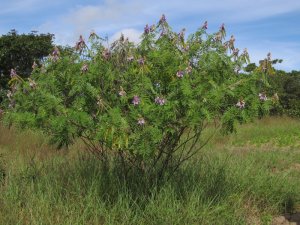
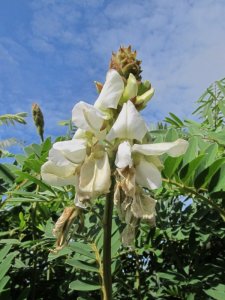
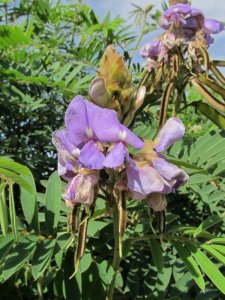
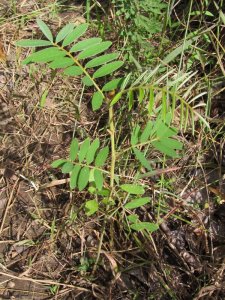
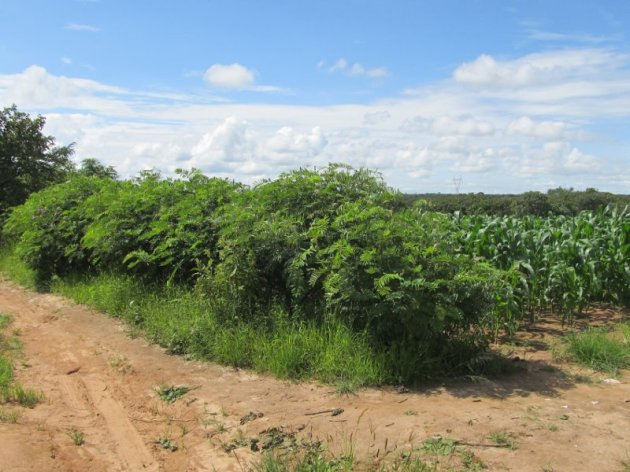
Very interesting Sam. Thanks for sharing information of what you are doing. Does it seem like you’ve been there a year already? Sure in some way it does, but what an adventure. We miss you and hope you are well. Blessing in all your work. ~ Steve & Gretchen
No, it really doesn’t seem like I’ve been here a year, but I still have more than 2 months to go before I’ve been here in Chalata a full year. Time is flying, especially now as there’s much I want to accomplish before the rainy season ends.
Hi Sam,
You’re doing such usefull things with these trees we’re learning about. Can you put up a pict of your garden and your house?
we’re going to a seminar on world water at PLU the end of this wk
;Dave is reading an interesting bk about a fellow going down a river in Tanz. Actually It is much more than the river journey.
We always look forward to your messages. Love, Aunt Carolee
Thanks for the request! I’ll try to publish a post next month showing my house and garden. Both are still undergoing changes and not quite how I want them to be or look, but I think it’s time I admit I never will be finished with either one!
Thanks Sam. I saw on Oregon Field Guide that the state used Rotenone to wipe out all of the fish in some lakes, when they become infested with invasive non-native fish (like gold fish!) but I didn’t realize it came from a tree. I also didn’t know it could be used as a pesticide. You’re sharing some good stuff.
thank you very much.from the little knowledge i acquire during my agriculture training at college i have managed to increase it through your postings.